Placemaking Postcards is a blog series from the Bass Center for Transformative Placemaking at Brookings where policymakers and practitioners guest-author promising placemaking efforts from across the U.S. and abroad that foster connected, vibrant, and inclusive communities. In line with the principle tenets of placemaking, the goal of the series is to recognize the community as the expert, highlight voices from the field, and to create a community of learning and practice around transformative placemaking.
While parks bring a number of positive benefits to a community, one’s ability to access them is often shaped by income, race, and education. Despite the fact that parks can improve public health, serve as anchors for economic development, act as green infrastructure, and build social capital by bringing together residents who otherwise might not cross paths, cities have historically neglected to create these spaces in traditionally underinvested neighborhoods.
Now that many cities are seeing significant new investment, some are concerned that even with the benefits new parks bring, they could also signal impending displacement. Increasingly, leaders are faced with the pressing question: How can cities or non-profits invest in places of need without fueling fears of displacement and gentrification? The 11th Street Bridge Park, a project of Building Bridges Across the River (BBAR) in Washington, D.C., is trying to tackle this issue head on.
Two neighborhoods divided by more than geography

The Bridge Park will connect the historic Anacostia and Capitol Hill—two neighborhoods geographically divided by the Anacostia River. But the divide between the two places runs deeper than geography: Decades of disinvestment, coupled with the economic, racial and geographic segregation of Wards 7 and 8 have culminated in disparities across all major indicators of health, wealth, and economic opportunity—disparities that separate the communities east of the river from their neighbors across the water.
A key goal for the Bridge Park is to serve as an anchor for equitable and inclusive economic growth.
Given this stark reality, a key goal for the Bridge Park is to serve as an anchor for equitable and inclusive economic growth. Its design strategies are aimed at increasing physical connectivity between those living on both sides of the river, but also ensuring that residents and small businesses—particularly those who have suffered from divestment—continually benefit from the success of this new civic space.
To ensure equitable outcomes, impacted communities must lead design and development efforts
In an effort to lead with equity, the park’s conceptualization and design are being driven by impacted communities. In the first two years of planning, we held hundreds of neighborhood meetings on both sides of the river, with community residents identifying programming concepts for the park. The park’s architects wove these concepts into the design and are continually working with community members for their input.
Through our community engagement, it became clear that the Bridge Park can be more than a park. In particular, it can symbolize a new unity and connection between one booming area of the city and one that has long been excluded from the city’s economic progress.
To help make this sense of unity a reality, we launched an equitable development process—combining data with insights from stakeholders, nonprofit leaders, business owners, and city officials to create an Equitable Development Plan, which outlines housing, workforce, small business, and cultural equity strategies aimed at driving inclusive growth.

Equitable development plans can preserve housing affordability, build community capacity, and maximize local benefit
To permanently preserve housing affordability and ensure community control of land assets, we worked with the residents and a local community development financial institution (CDFI), City First Homes, to stand up the Douglass Community Land Trust. We recently acquired our first property—a 65-unit apartment building that will provide permanently affordable housing to those in the 30-50% area median income range.
To help tackle disparities in capital access, we worked with the Washington Area Community Investment Fund to invest $1 million in small businesses through technical assistance and low-cost loans.
To ensure the park’s construction jobs go directly to the community, we partnered with the Skyland Workforce Center to complete five construction training programs targeted at east of the river residents. Richard Sullivan, a graduate of the training program and Ward 8 resident shared, “When I got my job, I feel like the weight of the world was lifted off my shoulder—that I could be a husband, that I can be a dad, that I could contribute to the household.”
And beyond these qualitative successes, our efforts have brought concrete financial benefits to the community. To date, the Bridge Park has secured $56 million in direct investments, including LISC DC’s $50 million Elevating Equity initiative and funding from JP Morgan Chase, Citi Foundation, The JPB Foundation, Kresge Foundation, TD Bank, Capital One, Meyer Foundation, PNC and Wells Fargo. These dollars nearly match the bricks and mortar capital costs of building the actual park.
Every place is different, but here are some strategies we learned along the way
Our approach is beginning to inspire similar equity plans in places like St. Louis, Dallas, Minneapolis, Durham, N.C., and Los Angeles. While we’re nowhere close to done with our efforts, there are some key strategies we’ve learned along the way:
- Listen and evolve to communities’ changing needs. The Equitable Development Plan was always meant to evolve to meet the community’s changing needs. For the Bridge Park, this meant developing a series of cultural equity strategies, matched children savings accounts, and Community Leadership Empowerment Workshops teaching residents how to effectively organize and lead meaningful change. For an overview of the Bridge Park’s process used to create an equitable development plan, visit our equity toolkit.
- Embed evaluation throughout every stage of the process. From the beginning, the Bridge Park partnered with the Urban Institute to create clear, measurable goals for each equitable development strategy, while providing a real-time feedback loop of progress to-date. You can track the impact of these strategies on our community investments webpage, which is updated quarterly.
- Build in early wins. Many under-resourced communities bear the weight of plan after plan without tangible results, only widening existing trust deficits between developers and community members. To prevent this, we implemented the Ward 8 Home Buyers Club within one month of publicly releasing the plan, and has already helped 72 renters become homeowners. As Home Buyers Club participant Robin McKinney explains, “you have a lot of development and everything coming to the city. And the city is changing. And me being a homeowner, [now] nobody can push me out because I own my home.”
- Include municipal officials, community leaders, and nonprofits in the planning process. Use multiple means to engage people—this may mean handing out flyers or visiting door-to-door. Make it possible for people to attend meetings by picking realistic times that fit with people’s schedules. Consider providing child care, food, and stipends for focus groups. And write your plan to highlight and elevate the ideas of the people who are already there.
This work is not easy, but it’s important to make sure cities invest in parks and invest directly in the communities, neighborhoods and long-term residents surrounding those spaces. This is particularly critical for cities like the District, which are facing rapid change and an influx of new residents. More intentional efforts such as these are needed, because, to quote a Douglass Community Land Trust Advisory member Kymone Freeman, “Just because you move in, doesn’t mean I have to move out.”
Photos courtesy of OMA+OLIN (Bridge Park renderings) and Building Bridges Across the River.
If you are working on a placemaking practice, program, or tool with demonstrated impact (or that will be tested for impact over time), we’d like to hear from you! Please reach out to [email protected] to let us know about your effort and if you’d be interested in guest authoring a piece for the series.
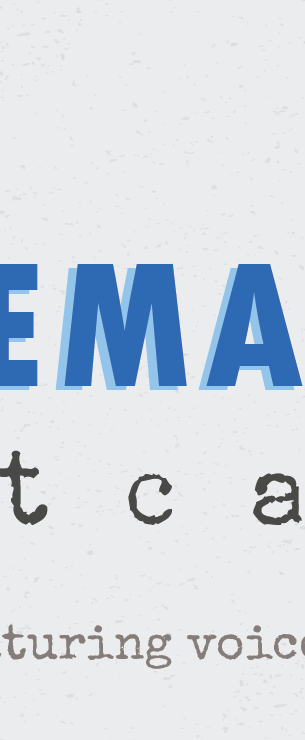
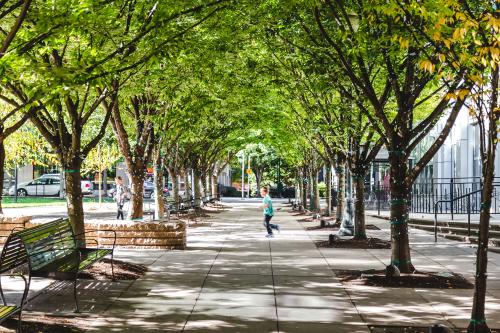
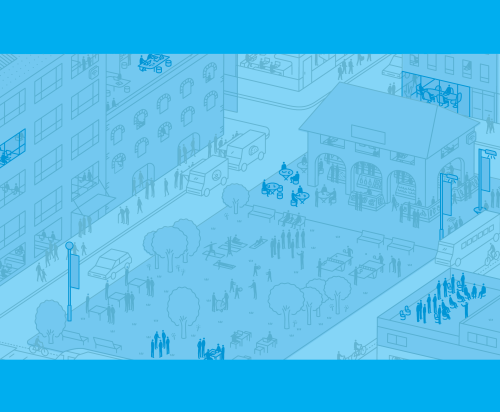
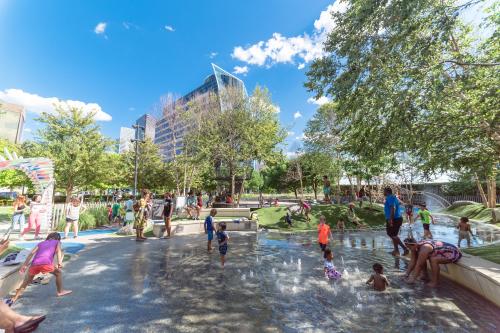
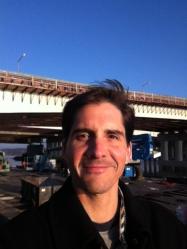


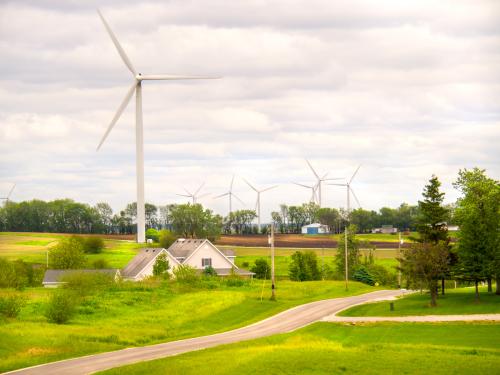
Commentary
How a Washington, DC park can serve as a model for bridging social and economic divides
July 9, 2019